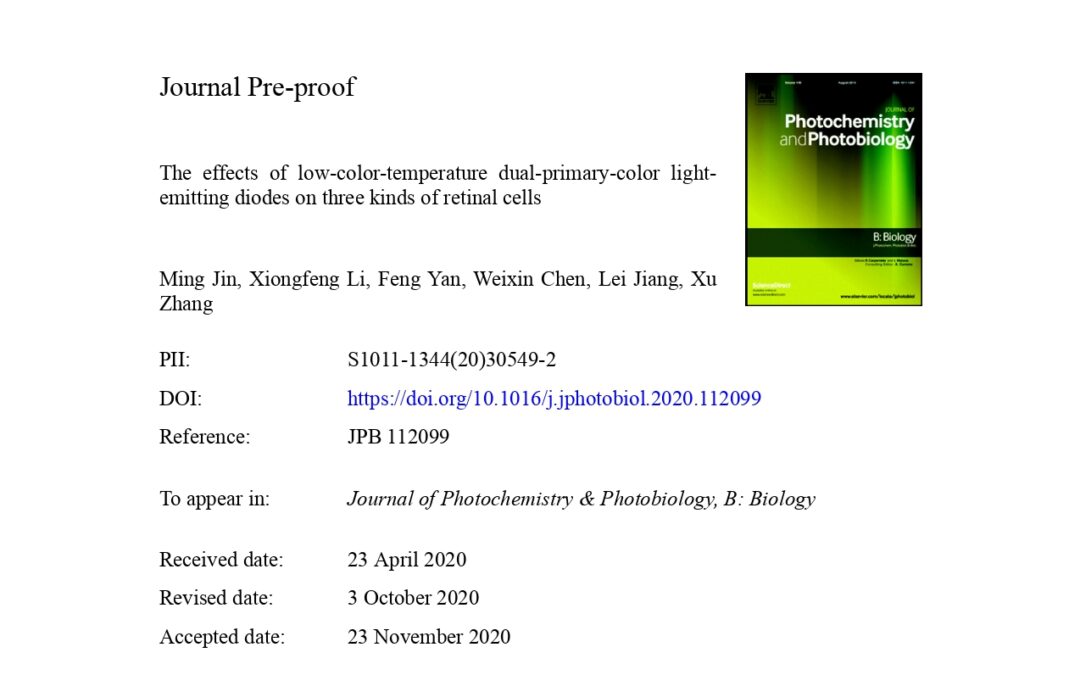Long-term illumination of the retina with blue-light-excited phosphor-converted light-emitting diodes (LEDs) may result in decreased retinal function, even if the levels of blue light emitted are low. New low-color-temperature dual-primary-colorcLEDs have been developed that are composed of only two LED chips: a red chip and a yellow chip. These LEDs are expected to become a new type of healthy lighting source because they do not emit blue light, they lack phosphor, and they solve the problem of low efficiency encountered with phosphor-converted low-color-temperature LEDs. Many studies have indicated that these new low-color-temperature LEDs are likely to have therapeutic effects. However, the biological safety of these LEDs needs to be explored before the therapeutic effects are explored. Therefore, this experiment was conducted to investigate the effects of the new low-color-temperature LEDs and fluorescent white LEDs on three types of retinal cells. We observed that the viability and numbers of retinal cells decreased gradually with increasing LED color temperature. The new low-color-temperature LEDs caused less death and adverse effects on proliferation than the fluorescent white LEDs. After irradiation with high-color-temperature LEDs, the expression of Zonula Occludens-1 (ZO-1) was decreased and discontinuous in ARPE-19 cells; the stress protein hemeoxygenase-1 (HO-1) was upregulated in R28 cells; and glial fibrillary acidic protein (GFAP) and vimentin were upregulated in rMC-1 cells. We therefore conclude that the new white LEDs cause almost no damage to retinal cells and reduce the potential human health risks of chronic exposure to fluorescent white LEDs.
The effects of low-color-temperature dual-primary-color lightemitting diodes on three kinds of retinal cells


